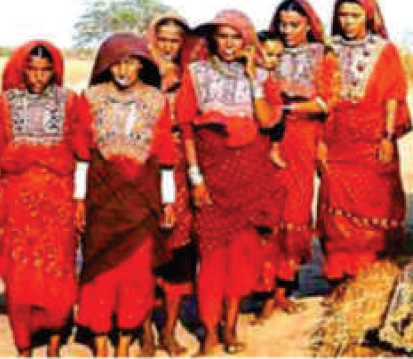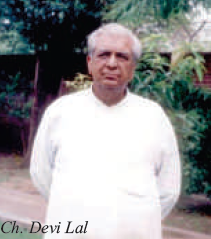Jat Community
This is a collection of articles archived for the excellence of their content. Readers will be able to edit existing articles and post new articles directly |
Jat Community
Brave warriors.... Peaceful pastoralists
India Harmony VOLUME - 1 : ISSUE – 5 JULY-AUGUST, 2012
The Jats are a nomadic clan who occupy a preeminent position in Haryana, western Uttar Pradesh, Punjab, Delhi and eastern Rajasthan. They are divided into 12 clans and about 300 gotras. Though the origin of the Jats is much debated, detailed research has shown that they are as old as time itself. Some legends speak of them originating from the locks of Lord Shiva and thence the name Jata. However, old texts refer to them as Indo-Scythian and English historians refer to them as Sarmatians who also are generally identified as Scythians. Sarmatian is an anglicisation of the Latin Sauro Matii which in turn is derived from the Prakrit Surya Madra which in English means Solar Medes or Sun worshippers, The Solar Medes are known to have existed in the Indo Iranian provinces and worshipped the Sun. They are believed to be an Indo-Aryan tribe connected to the Vedic civilization (4500 BC - 2500 BC) that existed along the Saraswati river. It is a debatable question whether they were born in Asia Minor, the cradle of civilization, traveling southwards towards Sindh and northwards to southern Europe. Whatever the case may be it is clear that there is a strong connection between Iran and the lands settled by the Iranic people that traces Punjab as the primary home of the Jats (known as Hapta-Hindawa or Sapta-Sindhu in Prakrit). This region is mentioned in the ancient scriptures of the Aryan Zoroastrians as Hapta-Hindawa in Persian or Sapta-Sindhu in Prakrit. Even today, the highest density of Jat population is along the dried bed of Saraswati called Harahvati in Persian. It is evident that the Jats being the present day inhabitants of the the lost Harahvati river are very closely linked to the earliest civilizations. On a stone inscription of the King Darius (522-486 B.C.) the nation of the Haravatis appears among the 23 subject nations. The Persian sacred books of the Avesti call that nation the Harahvaiti. The provinces settled by that nation encompassed in those times the southern half of modern south Afghanistan, the whole of Baluchistan and the eastern part of modern Iran. So that ancient province may be looked upon as the paleo-fatherland of the modern Jats of India. They can be found in the present day in Haryana, going on to Punjab and ending up in Rajasthan. They play a predominant role in this region. Agriculture, soldiering and cattle rearing have been the traditional occupation of the Jats, which they continue to follow to the present day. Their food habits also remain closely linked to the soil and comprise mostly of dairy products and grains.
The Jats are not a homogeneous ethnic group living in a particular area and speaking a single language. Rather, they are a people who live scattered around the world among several ethnic groups, yet retain their own identity. Their tall wellbuilt bodies, patrician features, straight black hair and immense strength give them a distinct identity in the diverse lands of India. This distinction is often based on occupation and heritage. The Jats are primarily located in north India and southern Pakistan, although there are said to be some communities in Germany, Denmark, Sweden, Russia, Iran and Ukraine. However, their origin, history, and current dispersion are spread much wider. History proves that they reached Egypt with the Muslim conquerors, lived in Afghanistan before the Muslims, and invaded China with the Mongol army. They also proved to be a threat to Tamar Lane in Persia and Uzbekistan.
Whatever their origin, in the eighteenth century, the Jats became a force that could not be ignored. Jats are a brave, hardworking and independent minded people. Primarily agriculturists, the Jats led a fairly autonomous political life. During the Mughal period, the role of the state was limited. With the exception of Bharatpur, no Jat kingdoms were founded. As per the Varna (Caste) system, the Jats are Kshatriyas or the warrior class. As they were outside the rigorous brahmanical social order, this position was not emphasized till the growth of the Arya Samaj among the Jats. Overall, the Jats have a very good self image and they are a proud people. 'Men may come and men may go, but I go on forever,' is a well known Jat proverb. It has been said that no Jat wants to be ruled. Rather, he desires to have power over a group, if not over an area.
The first opposition to Aurangzeb's rule came from the Jats of Mathura. In 1669, the sturdy and hard working peasantry of Jats under the leadership of Gokla, a zamindar of Tilpat, rose against and killed the Imperial Faujdar Abdul-Nabi. It took more than one year for the powerful Mogul forces to subdue the Jats. But this did not deter the Jats and they once again rose in rebellion under the leadership of Raja Ram in 1685. Akbar's tomb in Sikandra was plundered by them in 1688. Finally the Jats were defeated and Raja Ram slain in 1691. But the Jats reorganized themselves under the leadership of Churaman and revolted. They continued a strong armed resistance against the Mughals after Aurangzeb's death.
Towards the end of Aurangzeb's reign, bands of Jats under individual leaders like Rajaram, Bhajja and Churaman carried out depredations around Delhi and Agra. They slowly increased their power. But whatever they had achieved was lost when Sawai Jai Singh II captured Churaman's stronghold of Thun in 1721. Till this time, the Jats were not a united force and followed their individual village headsmen. But this changed when Badan Singh, the son of Churaman's brother, Bhao Singh established his authority over almost all of Agra and Mathura by his wisdom, versatility and strategic marital alliances with powerful Jat families. Badan Singh died on 7th June, 1756. His adopted son and successor was Suraj Mal.
Suraj Mal, has been variously described as 'Plato of Jat tribes' and 'Jat Ulysses' because of his sagacity, steady intellect and clear vision. Suraj Mal extended his kingdom to Agra, Mathura, Dholpur, Mainpuri, Hathras, Aligarh, Etawah, Meerut, Rohtak, Farrukhnagar, Mewat, Rewari and Gurgaon. He was described as the greatest warrior and the ablest statesman that the Jats have produced. Suraj Mal died on 25th December, 1763. Such was the might of the Jats that Bharatpur came to be known as the impregnable city. The beautiful palace and gardens at Deeg and the Bharatpur fort, both built by Suraj Mal , symbolized the coming of age of the Jat state. Soon, nobody dared question the Jats' prowess in battle. The British general, Lord Lake, thought otherwise and paid dearly with his life for his decision to besiege the Lohagarh fort. At Deeg, the maharaja's men successfully took on the might of a combined Mughal and Maratha army of 80,000.
Renowned for their military prowess, many Jats were recruited into the British-India Army during World War I. Earlier, they served as fighters in the Persian army. A large number of Jats serve in the Indian Armed Forces today and form one of the largest ethnic groups in the army. They have produced the bravest of the brave officers and soldiers who have been decorated with the highest military honours, the Mahavir Chakra and Paramvir Chakra. The Green Revolution brought considerable prosperity to the Jats in the decades after independence especially after the division of Punjab and Haryana in 1966. The Jat regions in India especially Haryana are among the most prosperous on a per-capita basis. Today, many Jats are well educated occupying high positions in academic and technical arenas. Conservative by nature, the Jats rarely marry people from other ethnic groups. Great pride is placed in their ancestry. In fact, all the Jats in a particular village consider themselves to be the descendants of the man whom they believe founded the village. Most Jats in India are Hindus, the rest being Sikhs or Muslims. The Jats living in Pakistan are primarily Muslim. The most well known Jat Sikh family are the Maharajas of Patiala whose illustrious lineage and brave heroics still loom large over Punjab politics in present day India. Maharaja Ranjit Singh, who held sway over a large Sikh empire, is also believed to be a Jat Sikh.
The Hindu Jats' religious beliefs are usually nonorthodox. A large number came under the influence of Swami Dayanand and the Arya Samaj in the early part of the 20th century. The Arya Samaji influence played a significant role in shaping their socioreligious identity. The Muslim Jats are Sunnis of the Hanafi school, but are known to have a strong tradition of worshipping many local saints.
Sir Chhotu Ram and Chaudhary Devi Lal (former Deputy Prime Minister of India), are two well-known Jat leaders from Haryana. Seth Chhajju Ram was one of the most well-known business persons and philanthropists of the 20th century. Today, Shri K.P. Singh, promoter of the DLF Group is known throughout modern India as a visionary businessman who initiated the concept of fully integrated suburban townships to serve India's growing urban needs. Shri Bhupinder Singh Hooda is a highly celebrated Jat leader of today having steered Haryana successfully through difficult times into prosperity fueling Haryana's rapid modernisation .
Having descended from a lofty ancient linage the Jats have been protectors and providers of their community through the ages. They must remain conscious and vigilant of their role and contribution to meet the aspirations of the present generation in India's socio-economic order.










